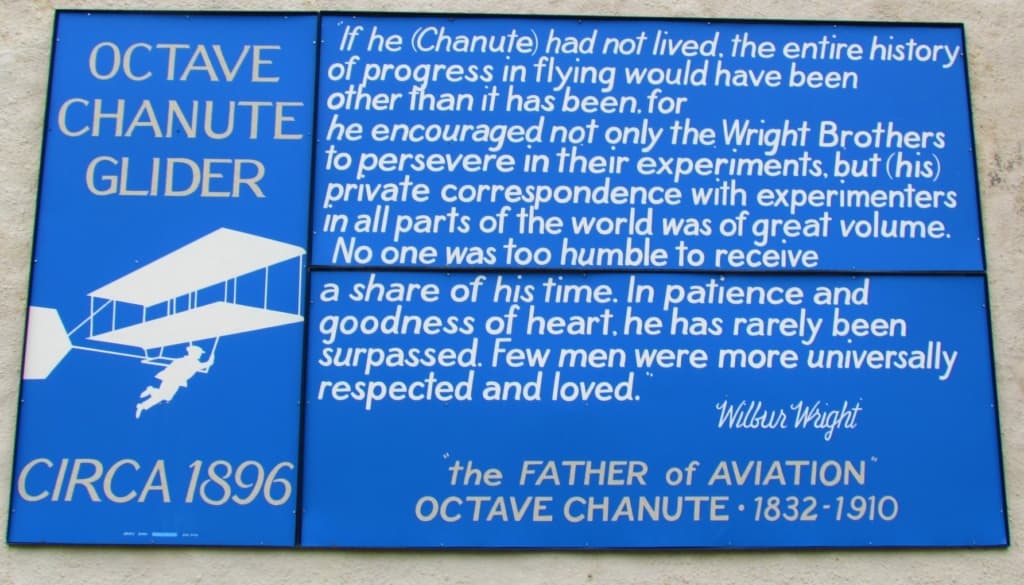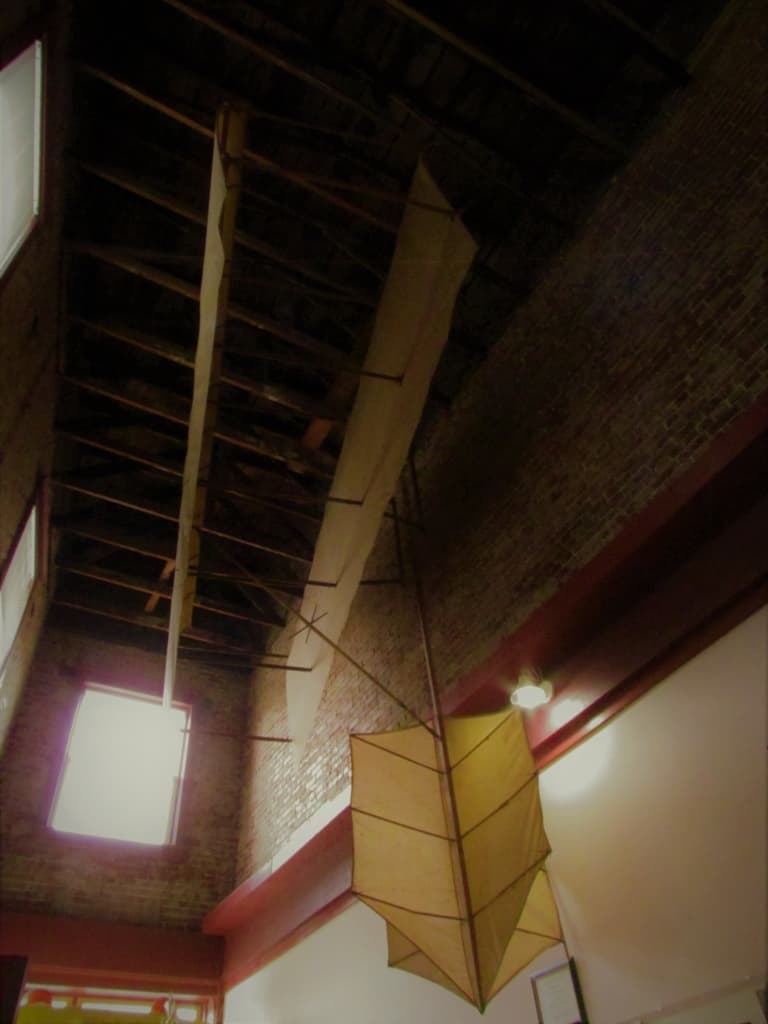Throughout our lives we learn so many important historic names, but our guess is that most of you are unfamiliar with Octave Chanute. When we planned our visit to Chanute, Kansas it never occurred to us how the town had picked its name. A visit to the Chanute Historical Society Museum would help us better understand the story behind the origin of the name. We noticed a monument nearby the museum and took a moment to check it out. The sculpture honors the Wright Brothers flight and soon we would learn the connection to Mr. Chanute.
We want to thank the Chanute, Kansas Tourism Office for their hospitality. Rest assured that all opinions are our own.

The Railroad Causes A Stir
To understand the dynamics around Chanute’s naming, one must travel back to around 1856, when settlers began moving to the region. Before long, there were four unique townships laid out in close proximity to one another. The promise of the soon to arrive railway had led to their quick expansions. Alliance, Tioga, Chicago Junction, and New Chicago were all vying for the chance to become the railroad’s land office. For two years this dispute would continue, until the arrival of Octave Chanute. Serving as the Chief Engineer for the railroad, he suggested the four towns merge into one. On January 1, 1873 they officially became chartered as the City of Chanute, a name chosen to honor the engineer.

A Beautiful Mind
Born in Paris (1832), Octave would emigrate to America in 1838. His father was a professor, who stressed the importance of education to his son. Octave would pursue his engineering degree and began training for his career in 1848. Over time, it would be seen that he not only designed some amazing structures, but led the way of some innovative thinking that would help pave the way for railroad expansion. He designed the first bridge to span the Missouri River, in Kansas City. This would help secure Kansas City as the dominant destination in the region. This was only one of many bridges that he would design during his work for the railroads.

His designs were not limited to bridges, as he also designed the two largest stockyards in the United States (Chicago and Kansas City). He dabbled in inventions when he developed a new pressure treatment method for railroad ties that increased their lifespan. To prove this method worked, he also invented the date nail that is still used by railroads to track the age of wooden structures. We learned about date nails during our visit to the Osawatomie History Museum. (You can read more about it here.) Chanute would retire from the railroad industry in 1883, and devote time to assisting in the growing science of aviation.

Up, Up, and Away
Octave Chanute first became intrigued with aviation, in 1856, after witnessing a hot air balloon taking off in Peoria, Illinois. After retiring, he found the increased leisure time allowed him to further explore this field and applied his engineering principles to improving it. Many of his preliminary finding were published in 1894, in the book Progress of Flying Machines. With the assistance of younger participants, Chanute conducted a series of experiments along the shores of Lake Michigan. He determined that the most logical way to increase lift would be to stack wings one above the other. His strut-wire design came from his background designing bridges and would be implemented in bi-wing plane designs.

Our visit to the Chanute Historical Society Museum gave us the opportunity to see a full scale replica of Octave’s 1896 biplane glider. This double-decker design would be utilized by the Wright Brothers during their first recorded heavier than air flight in 1903. Chanute came in contact with the pair in 1900 and visited their Kitty Hawk camp on multiple occasions. His constant encouragement was documented in hundreds of letters he sent the pair between 1900 and 1910. Octave had even suggested that the brothers locate their campsite in the mid-Atlantic region, which would provide regular breezes and soft sandy landings. Chanute freely shared his knowledge with anyone who would listen and in doing so became an important catalyst for the invention of powered manned flight.

Other Chanute, Kansas Legends
It never ceases to amaze us to find the notable connections to the destinations we visit. Learning about Octave Chanute was an unexpected treasure, but he is not the only recognizable name. Paul Lindblad was also a local, and went on to much success as a pitcher in major league baseball. He played 14 seasons in the majors and was a member of three World Series winning teams. His connection to our hometown is noteworthy, as he was signed by the Kansas City Athletics in 1962. He would move with the team to Oakland in 1968. It should be noted that he was the last pitcher to face Hall of Famer Willie Mayes, which occurred during the tenth inning of Game 3 of the 1973 World Series. (Mayes would ground out.) It just once again proved that you never know what historic names or events you will uncover when you explore a new destination. It’s part of the reason we love to travel!






Love it, thank you for visiting us!!
Our pleasure!
Thank you so much for your fascinating historical review of Octave Chanute and the Wright Brothers connection in aviation! I was able to print your piece to keep with my prized historical literature. Do you travel mostly in US or do you explore international venues? Thanks again!
Marilyn Bryant
Marilyn, we are so happy you enjoyed it. Our travels are all over the place, but we enjoy focusing on the Central U.S.
Thank you for the above. Who would have ever though?
We know that’s right.